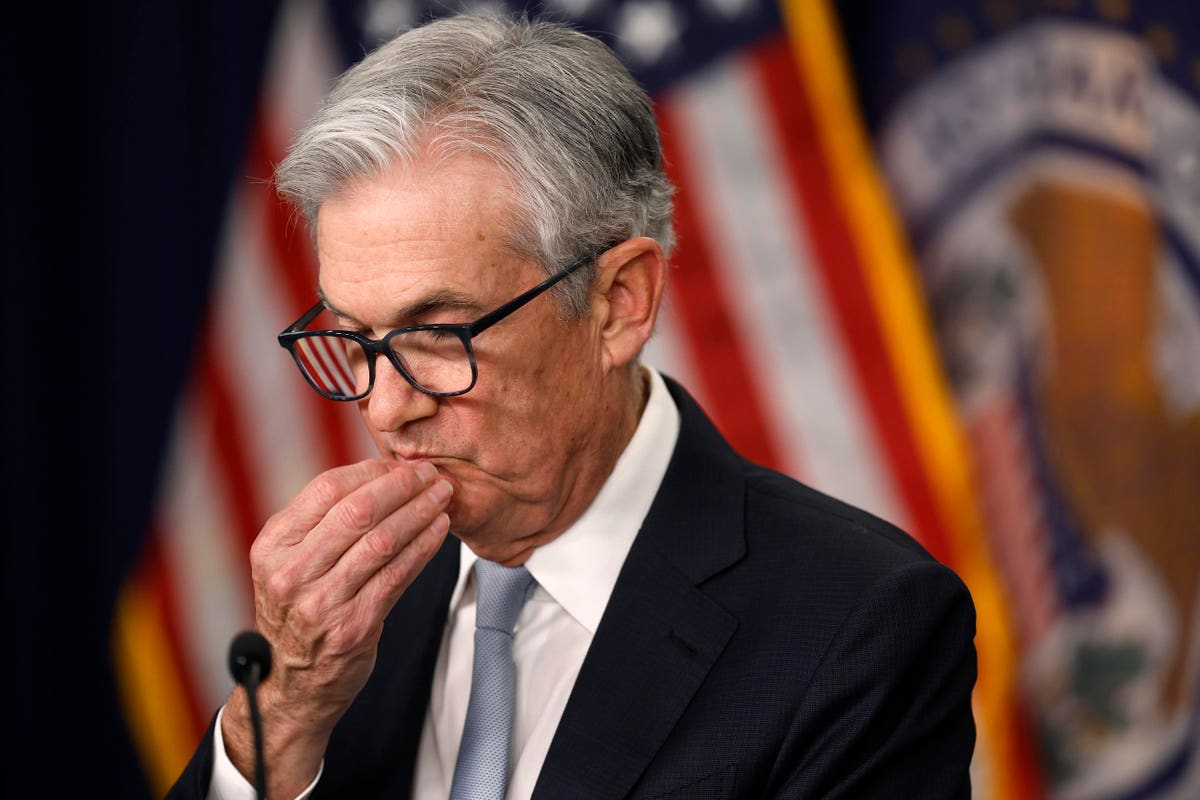Nowcasts of U.S. inflation for May suggest that headline inflation will slow, but that core inflation will remain well above the Fed’s target. On June 13, the U.S. Bureau of Labor Statistics will release the Consumer Price Index report for May. Headline inflation has decelerated sharply since last summer, but core inflation has remained in a narrower range. The latest nowcasts don’t imply that that this will change much.
Nowcasts
The Cleveland Fed’s nowcast of inflation suggests that month-on-month inflation will come in at 0.19% and core inflation (which strips out food and energy) will be 0.45%. That would lead to an annualized inflation rate of 4.1% and 5.3% respectively. This would continue the trend of headline inflation dropping below core inflation that we’ve seen in March and April’s CPI figures. This forecast is based on observing current prices and imputing their likely impact on the inflation. Of course, nowcasting does not provide a perfect assessment of incoming inflation data.
This outcome, if it holds, would also continue the narrative that headline inflation is coming down, helped, in part, by falling energy costs, but that underlying inflation remains well above the Fed’s goal.
The Fed’s two-day meeting to set rates will start on the morning of the CPI release, and the expectation is that the Fed will most likely hold rates steady with a small chance of a rate hike. The market currently estimates that the chances of a hike are about 1 in 5. However, if inflation does not move down, then the Fed has hinted that further increases in rates are possible over the coming months. That’s because the Fed is very reluctant to consider cutting interest rates before U.S. inflation is truely beaten. If they do drop rates too early, policy-makers fear a repeat of the 1980s, where the Fed was continually reacting to moves in inflation by moving rates, rather than snuffing it out excess inflation in one go.
Housing
Housing is likely to be the biggest wildcard for U.S. inflation over the remainder of 2023. That’s because it carries a high weight in the CPI and shelter costs are currently rising at an annual rate of over 8%. If housing costs were to ease from current levels, then that would likely bring inflation down. Industry data suggests that U.S. housing costs, in aggregate, are declining.
In fact, some economists suggest that inflation is a lot lower than the CPI data suggests, because the CPI measure of shelter costs is a lagging indicator given the methodology used. If shelter costs do start to decline, that could be enough to bring CPI much closer to the Fed’s inflation target.
The Fed has said it doesn’t expect to cut rates in 2023 and the market is starting to believe them, after some skepticism. If upcoming inflation data continues to show rising core CPI, then it may be further vindication for the Fed’s stance. However, if shelter costs do start to ease, then that may be an early sign that the Fed’s policies are bringing inflation under control.
Read the full article here


